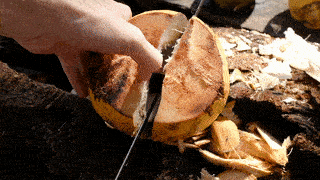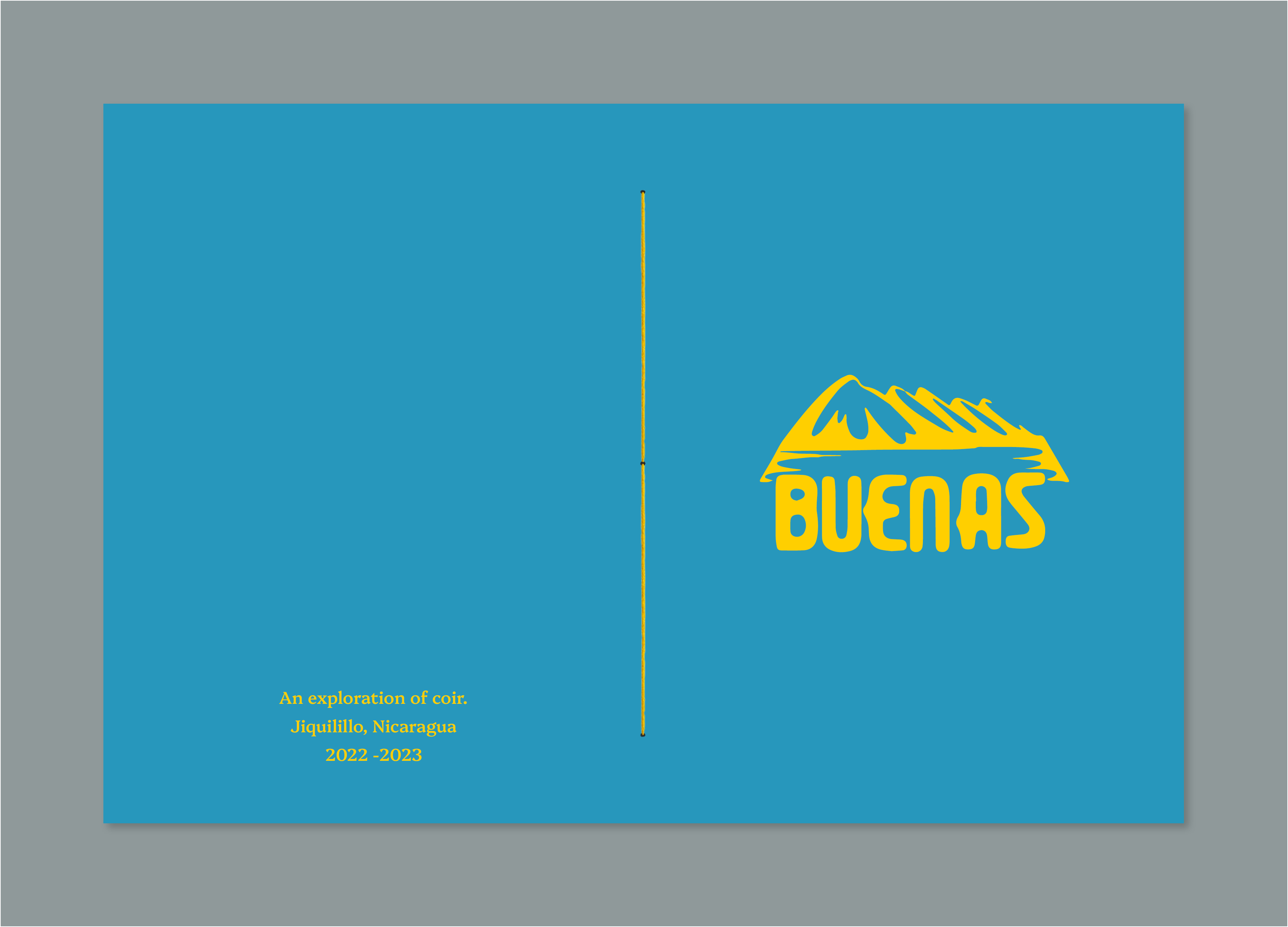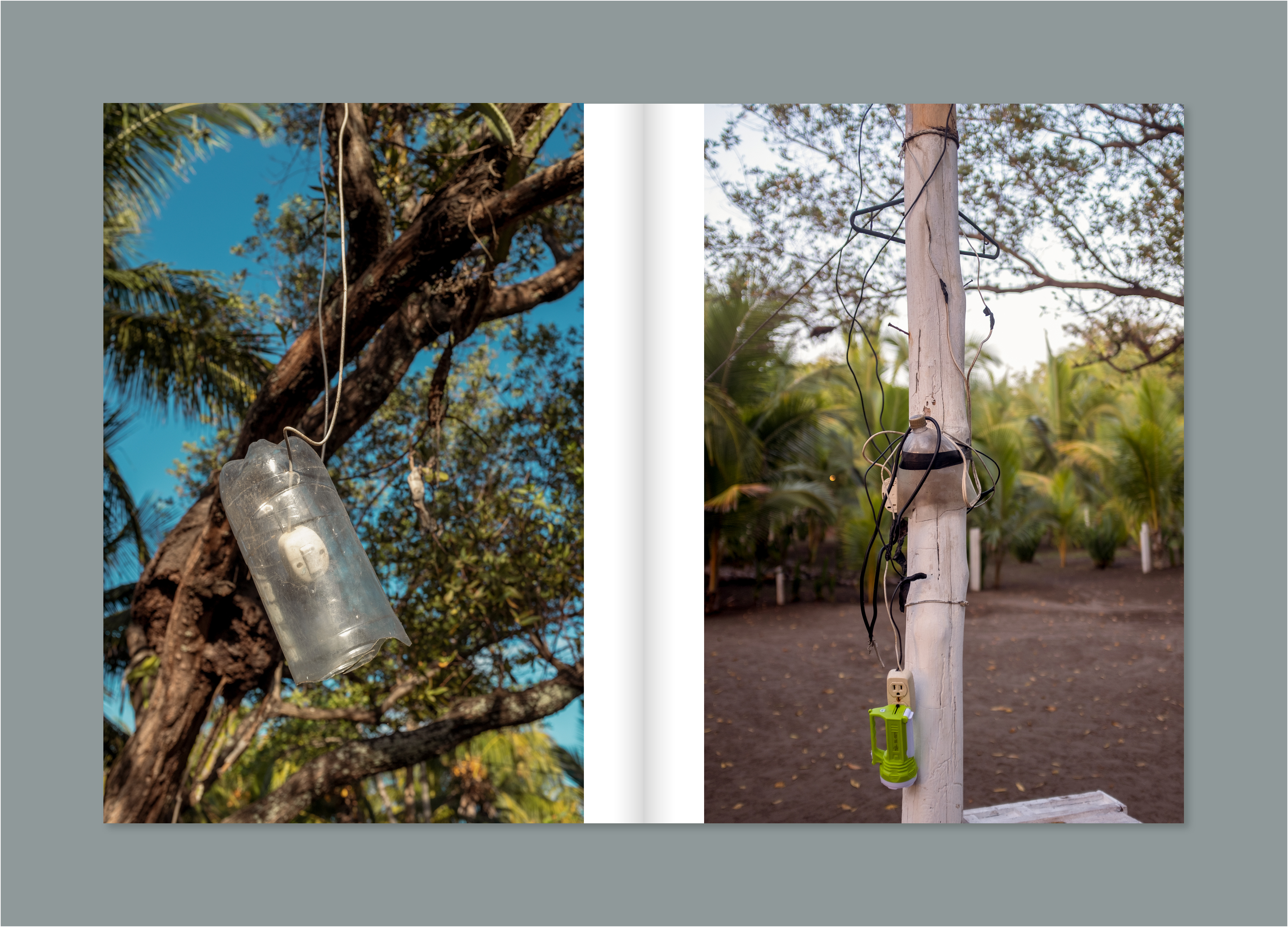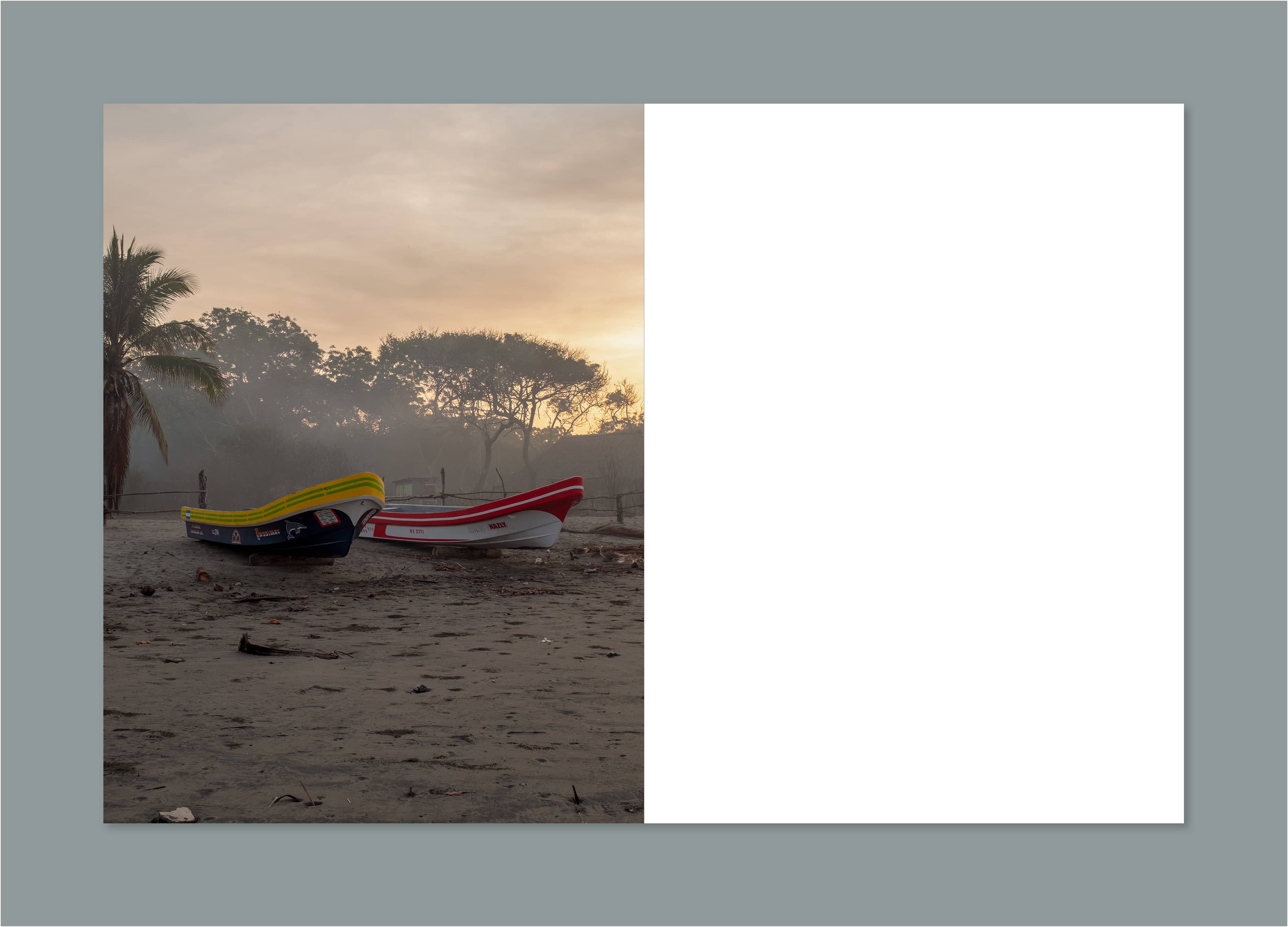
Coconuts in husk ready to be cut open.
info
MATERIALS:
COIR, EXPIRED LIME, VEGETABLE POLYMER, OCEAN WATER
CREATED WITH:
NICOLE CHARLES
Stages:
2022 Stage 1 in JIQUILILLO Nicaragua
2023 Stage 2 in JIQUILILLO Nicaragua

A found glass Fanta bottle was used as the form to create the shape of the lights shade.
Description
In a small fishing village in Nicaragua, with limited resources and an excess of Coconuts, Nicole Charles and I set out to create a formable material that relied as heavily as possible on the the immediate local materials and elements.
With constant power outages in the area effecting both the electricity and running water, we wanted to be able to create this material without having to rely on power. Using a non-electric gas stove and water directly from the ocean, we were able to bypass those issues.
On the beach near the property, a seawall made of large rocks had been erected in order to deal with rising water and tides associated with climate change. During the day, in the direct sun, temperatures would reach an average of around 40ºc and heat the rocks. We used this to our advantage in order to quickly dry the material so that mold growth would not happen in the humid environment. We also used the disinfecting properties of the sun along with the lime to help kill bacteria.

The inside of a coconut and husk.



Materials used, and the process of cooking the mixture.
The Coco material was then formed over found objects (a Fanta bottle and a piece of stone from the sea wall) to create usable objects such as bowls, mats, and light shade. With more time and resources, our goal is to create an easily made biodegradable material that could be used to help curb the waste that litters both the ocean and land.
It could be used as an alternative to making vs. purchasing certain items in an area with little to no disposable income. The recipe would be shared with local people to allow them to use this abundant local resource to create objects for not only their own use but hopefully as a way to generate extra income from local tourism as well.

A lamp made with the Coco material that was formed around a Fanta bottle, and a scrap piece of walnut, and an LED bulb.


Two different bowls. One using a found plastic dish as a mold, and the other using a rock from the sea wall.

The material has the ability to take screws and hold weight.

Flat sheet of the material.
Buenas
A small zine documenting the story of this project.


















Coconuts in husk ready to be cut open.
info
MATERIALS:
COIR, EXPIRED LIME, VEGETABLE POLYMER, OCEAN WATER
CREATED WITH:
NICOLE CHARLES
Stages:
2022 Stage 1 in JIQUILILLO Nicaragua
2023 Stage 2 in JIQUILILLO Nicaragua

Description
In a small fishing village in Nicaragua, with limited resources and an excess of Coconuts, Nicole Charles and I set out to create a formable material that relied as heavily as possible on the the immediate local materials and elements.
With constant power outages in the area effecting both the electricity and running water, we wanted to be able to create this material without having to rely on power. Using a non-electric gas stove and water directly from the ocean, we were able to bypass those issues.
On the beach near the property, a seawall made of large rocks had been erected in order to deal with rising water and tides associated with climate change. During the day, in the direct sun, temperatures would reach an average of around 40ºc and heat the rocks. We used this to our advantage in order to quickly dry the material so that mold growth would not happen in the humid environment. We also used the disinfecting properties of the sun along with the lime to help kill bacteria.




Process photos.
The Coco material was then formed over found objects (a Fanta bottle and a piece of stone from the sea wall) to create usable objects such as bowls, mats, and light shade. With more time and resources, our goal is to create an easily made biodegradable material that could be used to help curb the waste that litters both the ocean and land.
It could be used as an alternative to making vs. purchasing certain items in an area with little to no disposable income. The recipe would be shared with local people to allow them to use this abundant local resource to create objects for not only their own use but hopefully as a way to generate extra income from local tourism as well.

A lamp made with the Coco material that was formed around a Fanta bottle, and a scrap piece of walnut, and an LED bulb.


Two different bowls. One using a found plastic dish as a mold, and the other using a rock from the sea wall.

Flat sheet of the material.
BUENAS
A small zine documenting the story of this project.

















Designer, Artist
Creator, Designer
For over 2 decades I have worked for a vast array of clients across North America, creating digital + print work, objects, and merchandise collected around the world.
A label focused on experimental, environmentally based, very limited objects through sustainable material exploration and collaboration with musicians and artists.
Collective
Musician
A non-profit located on the arid coast of Almeria, Spain. Its site has inspired numerous projects that: defend the ocean, resolve environmental plastics, equilibrate agriculture and prevent desertification. It serves to function with the purpose of scientific research, design and reporting through the collaboration of respected experts.
I record music, scores, soundtracks, and field recordings for art exhibitions, films, and personal exploration. For the most part, Extempore is a mostly improvised analog process capturing sonic moments in time.
Designer, Artist
For over 2 decades I have worked for a vast array of clients across North America, creating digital + print work, objects, and merchandise collected around the world.
Creator, Designer
A label focused on experimental, environmentally based, very limited objects through sustainable material exploration and collaboration with musicians and artists.
Collective
A non-profit located on the arid coast of Almeria, Spain. Its site has inspired numerous projects that: defend the ocean, resolve environmental plastics, equilibrate agriculture and prevent desertification. It serves to function with the purpose of scientific research, design and reporting through the collaboration of respected experts.
Musician
I record music, scores, soundtracks, and field recordings for art exhibitions, films, and personal exploration. For the most part, Extempore is a mostly improvised analog process capturing sonic moments in time.